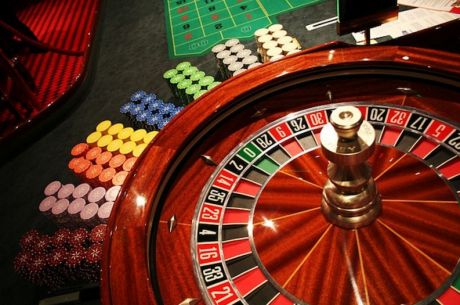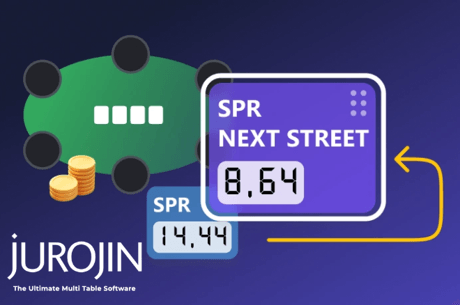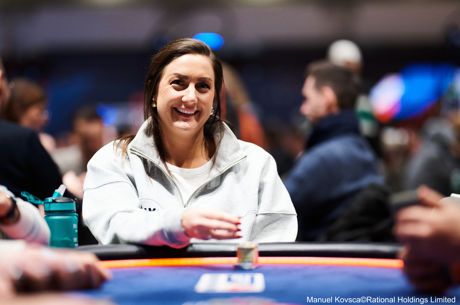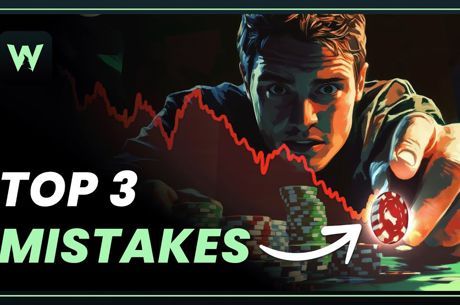Tommy Angelo Presents (WSOP Edition): Please Don't Feed the Grinders
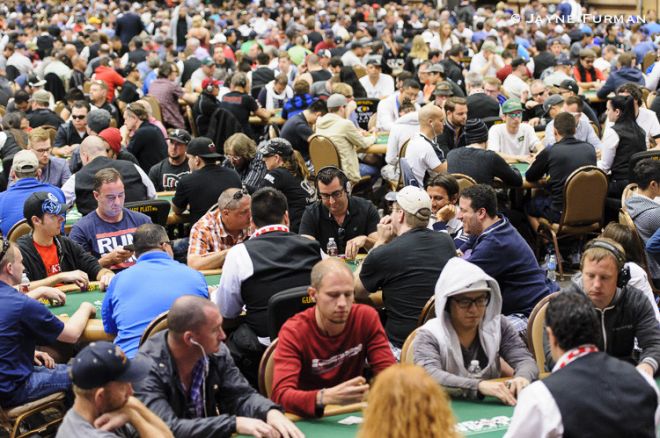
If you are going to Vegas for the World Series of Poker, and you’re super-stoked, and you want some advice on what to do and not do, here’s mine: Check out Hoover Dam. And if that’s too ambitious, then drive out to Red Rock Canyon and walk around.
As for food, my favorite restaurant in Vegas this time of year is the transient Poker Kitchen at the Rio because it’s approximately 30 paces and one hallway-width away from the cash game area in the cavernous Pavilion room, where I do all my poker playing. And if I’m hungry for something nutritious even faster, then I go to the junk-food station by the main entrance to the Pavilion room. They sell apples and bananas there.
When it comes to the poker playing itself, my normal advice is stuff like don’t play poker for 20 hours before you’ve even unpacked, unless you really have to. And try to eat actual food, unless you don’t want to. And try not to get maximally wasted in wondrous ways, unless the opportunity presents itself.
Basically I suck at suggesting to people who I don’t know — meaning you, dear reader — that you should curb your Vegas-induced degeneracy whatsoever. But if I have my coaching hat on, and I’ve been hired to help with control issues — which is ostensibly what I do in these articles — then I’m on solid footing. I feel I’ve been invited to tell you where they hide the bananas.
I’m only going to make one more suggestion. It’s for players who play both tournament-structure games and cash games at the WSOP.
First, though, here are my WSOP stats:
ATTENDANCE: I’ll be living at the Rio for two weeks this year, at the end of June and the beginning of July. This will be my 23th or 24th WSOP. My first was in 1987 and I’ve missed a few.
TOTAL TOURNAMENT CASHES: Zero.
TOTAL TOURNAMENTS ENTERED: Zero.
TOTAL AMOUNT WON IN CASH GAMES: A shit ton.
It used to be easy pickings in the cash games at the WSOP before the poker boom, back when folding before the flop was like a trade secret.
Almost every game was limit poker back then, including the WSOP cash games. I made my living at mid-stakes limit hold’em and seven-card stud, with the limits ranging from $15/$30 to $40/$80.
At the WSOP, I profited from a tilt advantage that was handed to me by the tournaments. Some players, after busting out of a tournament, would get in a cash game as fast as possible so that they could punish themselves and their bankrolls by playing like a spewboy before their tournament tilt wore off. It was like a sense of duty, or an offering, to the self-destructive degeneracy in us all.
I had already made many, many sacrifices in my life to that demon, and by the mid-1990s I knew how to sit patiently at the altar with a handful of other long-time sufferers and wait for tournament bustouts to come pray with us and leave behind their donations.
I was so sensitive to tournament tilt as a profit source that if the day’s WSOP event was a hold’em event, I would play hold’em that day, and if it was a stud event, I played stud. Thus I maximized my opportunities to finish off fallen warriors in their weakened state.
And when a new player sat in my game, be it stud or hold’em, I would try to surmise whether or not they had just busted out of something. If needed, I would send out probes, to extract information.
ME TO NEW PLAYER: How many entries did they end up with in the $1,500 stud tourney today?
Here are three typical answers to that question, and my analysis:
NEW PLAYER #1: “I don’t know. I just drove over from L.A.”
This guy is probably a pro.
NEW PLAYER #2: “They had 345 entries. It should have been 344 because I shouldn’t have bothered. I never have any luck in stud tournaments. You wouldn’t believe the hand I just busted out on…”
This guy might as well be playing keno.
NEW PLAYER #3: “I don’t know how many entries the stud tourney had. I didn’t play it. I just busted out of my fourth one-table satellite in a row and I figured I might as well give some money to you chumps before I go jump off Hoover Dam.”
Welcome, friend.
These days I no longer send out profiling probes because along the way I’ve morphed into the silent type. Now I track tilt the old-fashioned way, using my spidey sense.
And these days, because of the proliferation of high-quality instruction, the skill range from the worst players to the best players is way narrower than it used to be. That means that in the cash games, tilt plays an even bigger role than it used to in determining who wins and who whines.
So my one bit of advice is this: When you bust out of the WSOP event that you’ve been looking forward to all year, go away.
To join Tommy’s mailing list and receive updates on his upcoming third book, Painless Poker, plus random musings and advice, click here immediately.
Get all the latest PokerNews updates on your social media outlets. Follow us on Twitter and find us on both Facebook and Google+!

